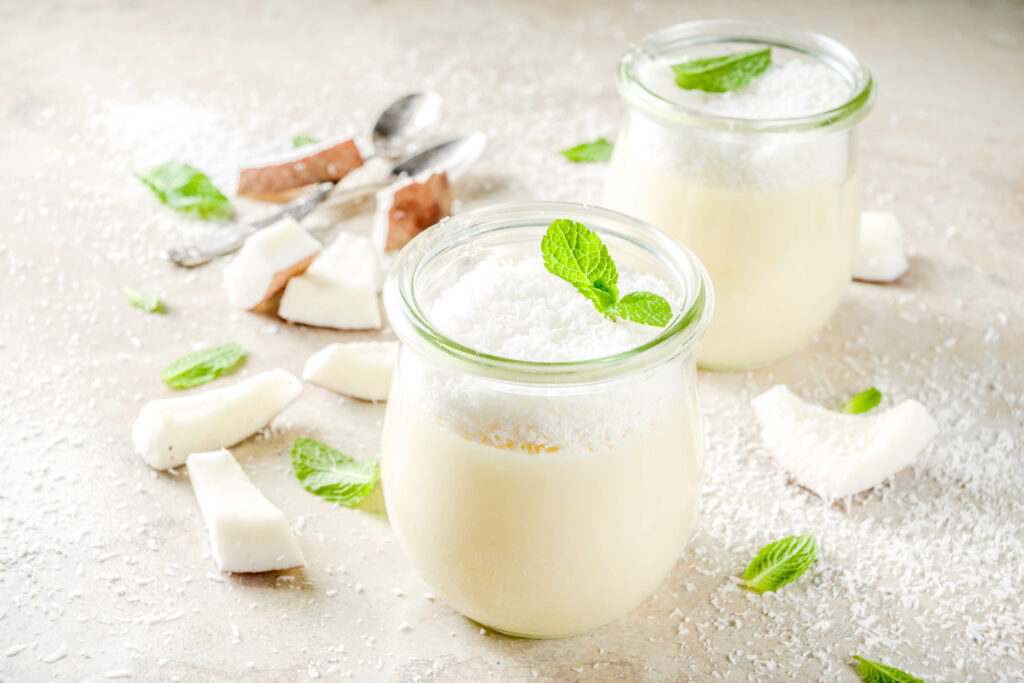A number of dairy trends have spiraled into the foreground since the COVID-19 pandemic forced the first lockdowns in the spring of 2020. Spanning everything from the healthiest yogurts to the most indulgent desserts, they reflect the rapid shift in consumer priorities from the first to the second wave – and a swell of opportunities for dairy manufacturers that catch the tide.

One thing remains certain despite the fluctuation in consumer demands. There will always be room for dairy products at each end of the health and indulgence spectrum, says Michelle Nguyen, regional dairy marketing manager at IFF.
“With the first wave lockdown, we saw people spending more time at home, making homemade yogurts with a focus on health, less sugar and natural ingredients.
“The second wave brought another reality as people juggled with the multiple responsibilities of working from home while taking care of children and elderly family members. This renewed the focus on convenient, on-the-go yogurt snacks and personalized nutrition.
“At the same time, the uncertainty and stress of the pandemic led to an increased demand for comfort food in the form of indulgent dairy desserts.”
Although the move towards more personalized nutrition and natural ingredients has been underway for some time, both trends have become increasingly pronounced over the past year. When it comes to healthy indulgence, Lightspeed/Mintel research has found that two out of five adults struggle to find free-from desserts that taste good. Euromonitor also notes that, despite the rising interest in clean labels, all-natural desserts currently only account for less than 2% of dessert launches in Europe, the Middle East and Africa (EMEA).
So, for manufacturers that can combine targeted nutrition, a cleaner, more natural label and uncompromised taste and texture, the potential for success seems high.
Perceptions of healthy yogurt
As a supplier of ingredient solutions to the dairy industry, IFF conducted its own survey in Germany, France and Russia to investigate how specific consumer groups – millennials, families and seniors – perceive the yogurt category. The findings show that protein, fiber and probiotics are the ingredients consumers most often associate with natural nutritional benefits.
To gain deeper insights into actual preferences, IFF presented the survey respondents with a series of fermented dairy and plant-based product concepts – each one tailored to the anticipated needs and expectations of individual family members.
“The concept that performed best across the board was a fermented plant-based snack developed for the family’s teenager which was seen to unite healthiness, environmental awareness and indulgence,” says Kirsten Lauridsen, principal application specialist at IFF. “The overall feedback to the concepts confirmed that personalized nutrition has strong prospects.”
Defining clean label

The IFF survey shows that consumers largely agree on the ingredients they see as healthy, highlighting protein, fiber and probiotics. But, when it comes to definitions of clean label, opinions are more diverse, as Mintel reveals in a review of the dessert category across the EMEA region.
While clean-label product launches in Russia, the UK and Denmark continue to rely on a no additives/preservatives claim, Mintel points out that manufacturers in the Netherlands and Germany increasingly put a sustainability claim on product packaging. In France, consumers tend to equate clean label with organic, and, in Spain and Italy, the most popular claim is allergen-free.
“In other words, perceptions of clean label are complicated. Generally speaking, though, the shorter and simpler the ingredient list, the better the chances of satisfying a wide range of consumer expectations. This can drive premium pricing in some markets,” Nguyen adds.
Uncompromised desserts
On the face of it, a basic yogurt recipe may seem the most favorable starting point for developing clean-label dairy products that meet consumer demands for health and indulgence. It is no secret, for example, that the right starter culture can restore full-bodied creaminess to a low-fat yogurt.
In the dairy dessert category, on the other hand, ‘better for you’ products with reduced fat and sugar have typically relied on tailored blends of emulsifiers and stabilizers for their rich taste and texture.
However, thanks to the latest developments in ingredient technology, new clean-label opportunities are now becoming available to manufacturers of dairy and plant-based desserts – drawing on kitchen-cupboard ingredients that consumers know well. Just as important, these solutions are being designed for manufacturers’ existing processes.
Natural functional blends like these are well timed to meet the expectations of consumers who have had plenty of time over the past year to reconsider their priorities. In the dessert category, the quest for healthy indulgence has usually been linked with compromise – sensory or nutritional. Manufacturers can today look forward to delivering the best of both worlds, topped off with a clean label.
Through well-aimed innovation, the dairy industry has renewed opportunities to capture the consumer’s heart. Ingredient technology is ready and available to cater for today’s personalized needs.



